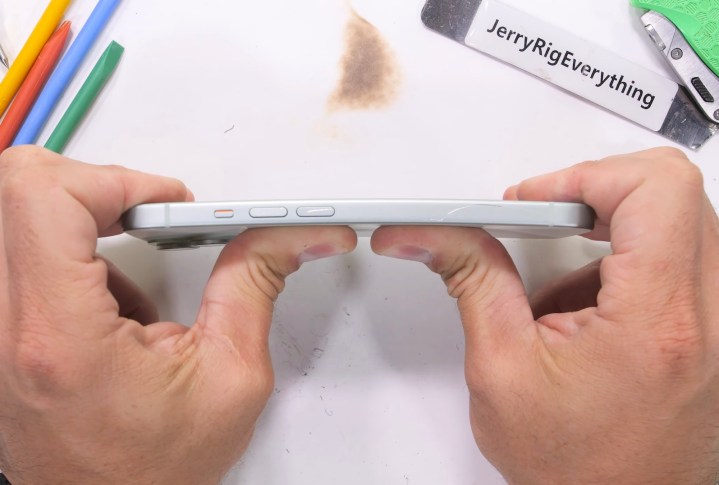
Earlier this week, we reported how popular tech YouTuber Zack Nelson busted the back of an iPhone 15 Pro Max when he subjected it to his bend test.
The back glass shattered with relatively little effort, which came as a great surprise not only to Nelson but to everyone watching, too.
On Wednesday, the YouTuber shared the results of the same durability test on Apple’s more affordable iPhone 15 and larger iPhone 15 Ultra.
After subjecting the smaller device to acts that it would ordinarily never face in everyday life (think box cutters, naked flames, etc.), the iPhone 15 held up pretty well, save for a few scratches.
Then it was on to the highly anticipated bend test.
Admittedly, Nelson’s bend test is rather unscientific. There are no clamps or vises or measuring devices. The YouTuber uses his bare hands, bending the phone with what looks to be a decent amount of force.
Most phones don’t break during Nelson’s bend test, though there was one horrible incident last year when the One Plus 10 Pro snapped clean — or actually rather messily — in two.
Hit the play button below to see how the iPhone 15 fared …
As the video shows, the 6.1-inch iPhone 15 remained intact, though there was a concerning moment when the display stopped working. This was put right by deploying rule number one in tech troubleshooting: turn the device off and on.
When Nelson also bent the 6.1-inch iPhone 15 Pro in his earlier video, that also survived any damage. It was the larger Pro Max whose back glass shattered, so how would the larger
Still, following this latest assessment, Nelson concluded that three of Apple’s four new iPhones survived his durability test.
Editors' Recommendations
- Nomad’s new iPhone case and Apple Watch band may be its coolest yet
- iPhone 16: news, rumored price, release date, and more
- iPhone SE 4: news, rumored price, release date, and more
- Here’s how Apple could change your iPhone forever
- There’s a big problem with the iPhone’s Photos app


